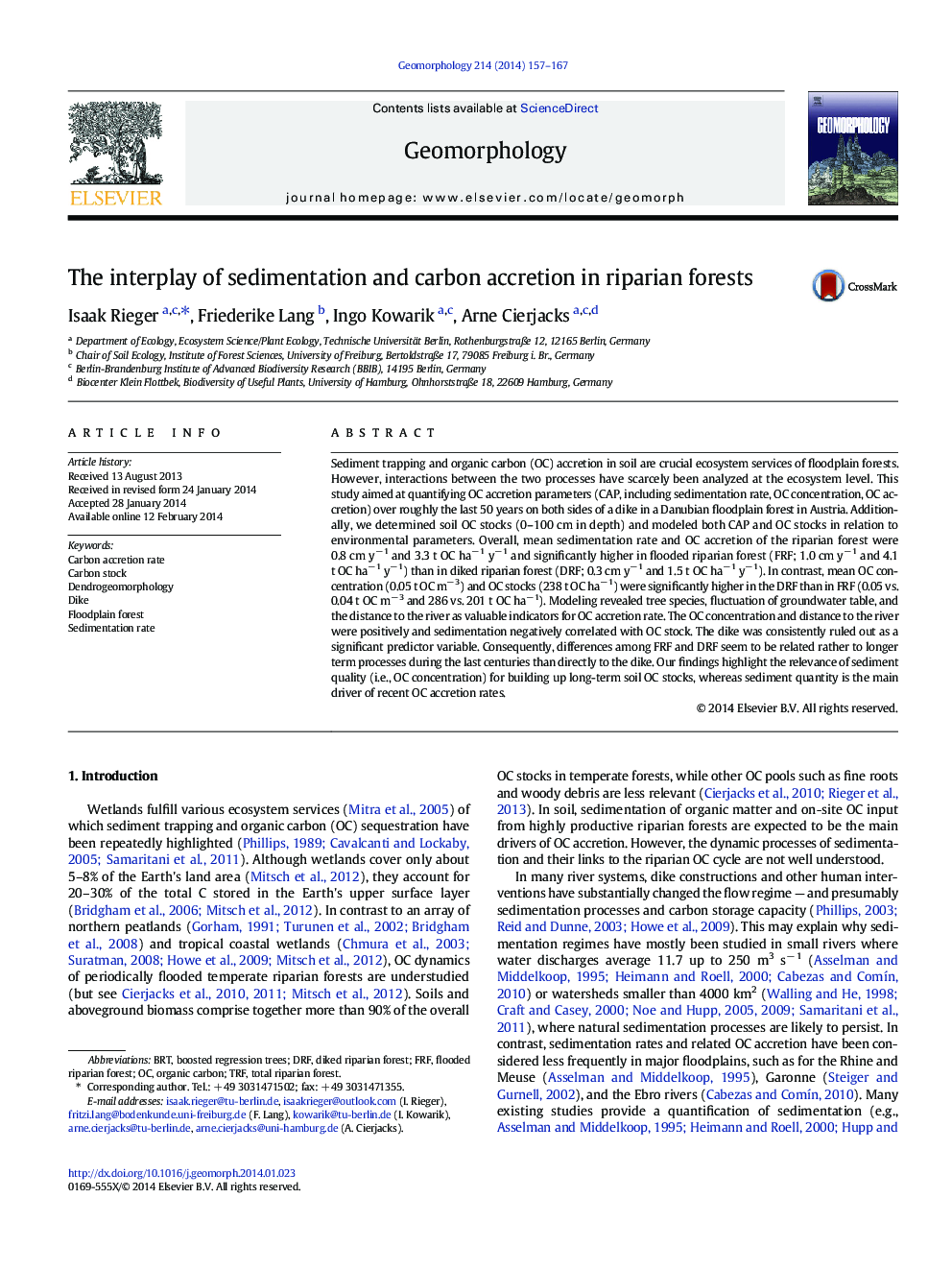| کد مقاله | کد نشریه | سال انتشار | مقاله انگلیسی | نسخه تمام متن |
|---|---|---|---|---|
| 6432546 | 1635435 | 2014 | 11 صفحه PDF | دانلود رایگان |
- OC accretion and stock were quantified in the Donau-Auen National Park, Austria.
- OC accretion was mainly influenced by sedimentation rate as opposed to sediment quality.
- Soil OC stocks responded positively to sediment quality (i.e., OC concentration).
- Dike construction was so far not influential to OC stocks at the Danube River.
Sediment trapping and organic carbon (OC) accretion in soil are crucial ecosystem services of floodplain forests. However, interactions between the two processes have scarcely been analyzed at the ecosystem level. This study aimed at quantifying OC accretion parameters (CAP, including sedimentation rate, OC concentration, OC accretion) over roughly the last 50 years on both sides of a dike in a Danubian floodplain forest in Austria. Additionally, we determined soil OC stocks (0-100 cm in depth) and modeled both CAP and OC stocks in relation to environmental parameters. Overall, mean sedimentation rate and OC accretion of the riparian forest were 0.8 cm yâ 1 and 3.3 t OC haâ 1 yâ 1 and significantly higher in flooded riparian forest (FRF; 1.0 cm yâ 1 and 4.1 t OC haâ 1 yâ 1) than in diked riparian forest (DRF; 0.3 cm yâ 1 and 1.5 t OC haâ 1 yâ 1). In contrast, mean OC concentration (0.05 t OC mâ 3) and OC stocks (238 t OC haâ 1) were significantly higher in the DRF than in FRF (0.05 vs. 0.04 t OC mâ 3 and 286 vs. 201 t OC haâ 1). Modeling revealed tree species, fluctuation of groundwater table, and the distance to the river as valuable indicators for OC accretion rate. The OC concentration and distance to the river were positively and sedimentation negatively correlated with OC stock. The dike was consistently ruled out as a significant predictor variable. Consequently, differences among FRF and DRF seem to be related rather to longer term processes during the last centuries than directly to the dike. Our findings highlight the relevance of sediment quality (i.e., OC concentration) for building up long-term soil OC stocks, whereas sediment quantity is the main driver of recent OC accretion rates.
Journal: Geomorphology - Volume 214, 1 June 2014, Pages 157-167
